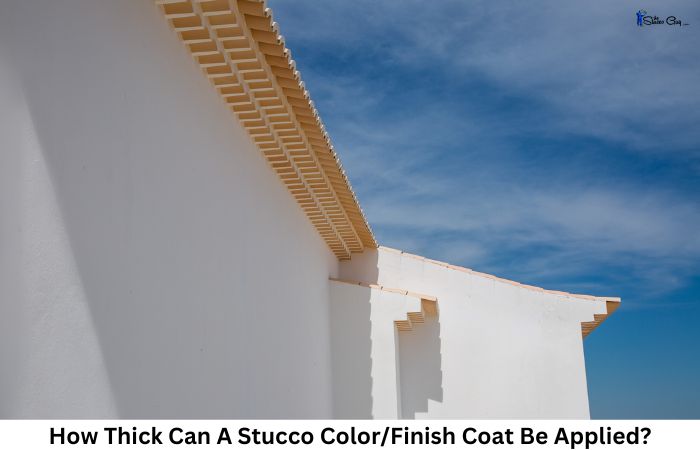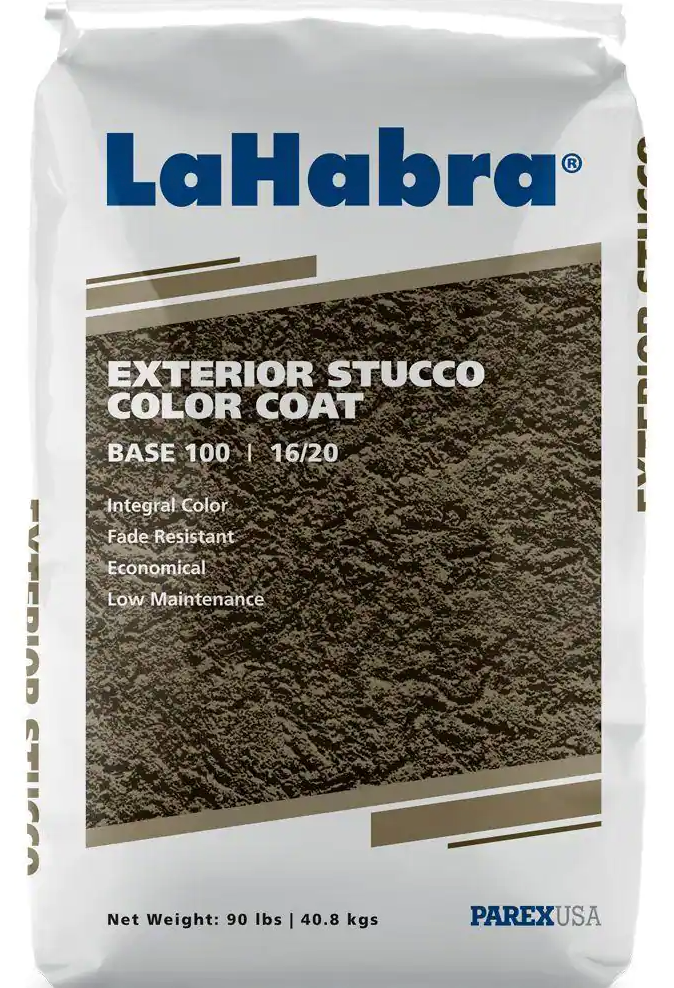
Spreading a new color coat on a wall or several walls on your home can make a huge difference, as far as the appearance of the building goes and it can be used to "freshen up" some unsightly areas too. There are some limitations to using a finish material though and the thickness of the material is usually the major disadvantage that comes to mind with these materials.
In this article, I am going to explain how thick a color coat or finish coat can be applied to your walls, what the variables are, the differences between the different types of materials and the details involved.
How Thick Can A Stucco Color Coat Be Applied?
On average, a stucco color coat can be applied from 1/16" to 1/4" depending on the type of finish, how many coats you are applying and the finish material you are using.
Acrylic finishes are usually applied thinner than cement based color coats due to the different aggregate that is used and the finishing textures that are offered. Some finishes require two separate coats, which obviously would allow for additional thickness over a single coat finish.
There are fine, medium and coarse aggregates that are added to these different finish materials which will affect their overall thickness as well.
Acrylic Color Coat Thickness:

Acrylic finishes/color coats tend to be thinner than a traditional (cement based) finish, due to the composition of the material. The acrylic tends to be a bit thinner, in general, in addition to the aggregate that is used, which is usually finer than sand.
Acrylic color coats can be anywhere from 1/16" thick to 1/8" thick on a single coat and is really not suited for filling large imperfections. You could use two coats and build up to a thickness of about 3/16 of an inch if you were putting on heavier coats with a medium or coarse acrylic finish.
Helpful Tip: The finer the acrylic, the more square footage you will be able to get out of it, but it will be thinner when it cures. The coarser the material, the less square footage you get but it will be thicker when it cures.
- Super Fine Acrylic: Can be built up to between 1/32"-1/16" for a single coat
- Fine Acrylic: Can be built up to about 1/16" for a single coat
- Medium Acrylic: Can be built up to between 1/16-1/8" for a single coat
- Coarse Acrylic: Can be built up to about 1/8" for a single coat
Since acrylic finish products remain wet until they are used, they have a predetermined thickness, unlike traditional finishes that you add water to, which can be adjusted.
Aggregates Used:
The aggregates used for these types of finishes/color coats will usually be something other than silica sand, like what is used for traditional finishes.
There are super fine, fine, medium and coarsely specified aggregates in these materials and the larger the aggregate that is used, the thicker the material will be on the wall, when the product cures, in general.
- Fine: Can be built up to about 1/16" for a single coat
- Medium: Can be built up to about 1/8" for a single coat
- Coarse: Can be built up to about 1/8"-3/16" for a single coat
This is because the aggregate acts as a kind of screed that when you trowel the material. It smashes the aggregate between your trowel and the wall, making the size of the aggregate the determined thickness, in theory.
This is subjective though, as the material can be applied thicker, with a lighter trowel pressure, to allow for more build up on the wall and could stay that thickness if the texture you are going after does not require the material to be further worked and finished.
Traditional Color Coat Thickness:

A traditional finish or color coat is usually thicker than an acrylic finish and can actually be much thicker, depending on how much water you add to the mix. This is a variable that does not exist with an acrylic product, as they are wet in their natural form, like paint, just with aggregate added.
In theory, a traditional finish can be applied to a wall as thin as 1/16" for a product that has a fine aggregate in it, like a 30 mesh sand and adding a bit more water to the mixture could make it even thinner.
You could also build a traditional finish up to 5-16" if you used a super coarse material that had 16 mesh sand and less water added to the overall mixture. This would run the risk of cracking though due to the added amount of lime that is used in these mixtures.
Aggregates Used:
Silica sand is the aggregate of choice for these types of finish materials and the sand size will determine whether the product is fine, medium or coarse. In general, a fine product will use a 30 mesh sand, a medium will use a 20 mesh sand and a coarse product will use a 16 mesh sand.
This is just a general rule, as most manufacturers use a combination of two or more sand sizes to achieve a more uniform finish in some of their cement based finish products. For example, a coarse material may use a 16 mesh sand, along with a 20 mesh sand, but the 16 mesh sand is larger and gives it its thickness.
The Types Of Finish You Want:
The type of finish that you use for your color coat will also be a factor in determining its overall thickness. For instance, a dash finish will build up the stucco more because it is sprayed on and left to dry. A troweled on finish will usually be a lot tighter and thinner to achieve a smoother finish, making it thinner in the process.
One Coat vs Two Coat Finishes:
It goes without saying that a texture that requires one single coat will be thinner than a texture that requires two coats because of that additional layer that has to be applied to the wall(s).
With that said, two coat finishes are usually two thin coats that are applied to the walls, not two heavy coats, so the overall thickness is usually still pretty minimal when measured.

